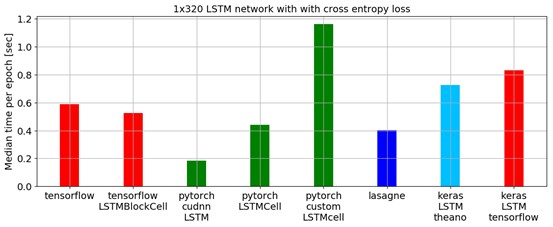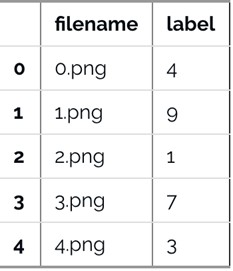原文標題:
An Introduction to PyTorch – A Simple yet Powerful Deep LearningLibrary
作者:FAIZAN SHAIKH
翻譯:和中華
本文約3600字,建議閱讀15分鐘。
本文透過案例帶你一步步上手PyTorch。
介紹
每隔一段時間,就會有一個有潛力改變深度學習格局的python庫誕生,PyTorch就是其中一員。
在過去的幾周裡,我一直沉浸在PyTorch中,我被它的易用性所吸引。在我使用過的各種深度學習庫中,到目前為止PyTorch是最靈活最易用的。

在本文中,我們將以一種更實用的方式探索PyTorch, 其中包含了基礎知識和案例研究。同時我們還將對比分別用numpy和PyTorch從頭構建的神經網路,以檢視它們在具體實現中的相似之處。
讓我們開始吧!
註意:本文假定你對深度學習有基本的認知。如果想快速瞭解,請先閱讀此文https://www.analyticsvidhya.com/blog/2016/03/introduction-deep-learning-fundamentals-neural-networks/
目錄
-
PyTorch概覽
-
深入技術
-
構建神經網路之Numpy VS. PyTorch
-
與其他深度學習庫對比
-
案例研究 — 用PyTorch解決影象識別問題
PyTorch概覽
PyTorch的創作者說他們遵從指令式(imperative)的程式設計哲學。這就意味著我們可以立即執行計算。這一點正好符合Python的程式設計方法學,因為我們沒必要等到程式碼全部寫完才知道它是否能執行。我們可以輕鬆地執行一部分程式碼並實時檢查它。對於我這樣的神經網路除錯人員而言,這真是一件幸事。
PyTorch是一個基於python的庫,它旨在提供一個靈活的深度學習開發平臺。
PyTorch的工作流程盡可能接近Python的科學計算庫— numpy。
你可能會問,我們為什麼要用PyTorch來構建深度學習模型呢?我列舉三點來回答這個問題:
-
易用的API:像Python一樣簡單易用;
-
支援Python:如上所說,PyTorch平滑地與Python資料科學棧整合。它與Numpy如此相似,你甚至都不會註意到其中的差異;
-
動態計算圖:PyTorch沒有提供具有特定功能的預定義圖,而是提供給我們一個框架用於構建計算圖,我們甚至可以在執行時更改它們。這對於一些情況是很有用的,比如我們在建立一個神經網路時事先並不清楚需要多少記憶體。
使用PyTorch還有其他一些好處,比如它支援多GPU,自定義資料載入器和簡化的前處理器。
自從2016年1月初釋出以來,許多研究人員已經將它納入自己的工具箱,因為它易於構建新穎甚至非常複雜的圖。話雖如此,PyTorch要想被大多數資料科學從業者所接受還需時日,因為它既是新生事物而且還在”建設中”。
深入技術
在深入細節之前,我們先瞭解一下PyTorch的工作流程。
PyTorch使用了指令式程式設計正規化。也就是說,用於構建圖所需的每行程式碼都定義了該圖的一個元件。即使在圖被完全構建好之前,我們也可以在這些元件上獨立地執行計算。這被稱為 ”define-by-run” 方法。

Source: http://pytorch.org/about/
安裝PyTorch非常簡單。你可以根據你的系統,按照官方檔案中提到的步驟操作。例如,下麵是基於我的選項所用的命令:

conda install pytorch torchvision cuda91 -cpytorch
在我們開始使用PyTorch時,應該瞭解的主要元素是:
-
PyTorch張量(Tensors)
-
數學運算
-
Autograd模組
-
Optim模組
-
nn模組
下麵,我們將詳細介紹每一部分。
1. PyTorch張量
張量就是多維陣列。PyTorch中的張量與Numpy中的ndarrays很相似,除此之外,PyTorch中的張量還可以在GPU上使用。PyTorch支援各種型別的張量。
你可以定義一個簡單的一維矩陣如下:
# import pytorch
import torch
# define a tensor
torch.FloatTensor([2])
2
[torch.FloatTensor of size 1]
2. 數學運算
與numpy一樣,科學計算庫有效地實現數學函式是非常重要的。PyTorch提供了一個類似的介面,你可以使用超過200多種數學運算。
以下是一個簡單的加法操作例子:
a = torch.FloatTensor([2])
b = torch.FloatTensor([3])
a + b
5
[torch.FloatTensor of size 1]
這難道不像是一個典型的python方法嗎?我們也可以在定義過的PyTorch張量上執行各種矩陣運算。例如,我們轉置一個二維矩陣:
matrix = torch.randn(3, 3)
matrix
-1.3531 -0.5394 0.8934
1.7457 -0.6291 -0.0484
-1.3502 -0.6439 -1.5652
[torch.FloatTensor of size 3x3]
matrix.t()
-1.3531 1.7457 -1.3502
-0.5394 -0.6291 -0.6439
0.8934 -0.0484 -1.5652
[torch.FloatTensor of size 3x3]
3. Autograd模組
PyTorch使用了一種被稱為自動微分(automaticdifferentiation)的技術。也就是說,我們有一個記錄器,記錄了我們已經執行的操作,然後它向後重播以計算我們的梯度。這種技術在構建神經網路時特別有用,因為我們在前向傳播時計算引數的微分,這可以減少每一個epoch的計算時間。

Source: http://pytorch.org/about/
from torch.autograd import Variable
x = Variable(train_x)
y = Variable(train_y, requires_grad=False)
4. Optim模組
Torch.optim是一個模組,它實現了用於構建神經網路的各種最佳化演演算法。大多數常用的方法已被支援,所以我們無需從頭開始構建他們(除非你想!)。
以下是使用Adam最佳化器的一段程式碼:
optimizer = torch.optim.Adam(model.parameters(), lr=learning_rate)
5. nn模組
PyTorch的autograd可以很容易的定義計算圖並且求梯度,但是原始的autograd對於定義複雜的神經網路可能有點過於低階。這也是nn模組可以幫忙的地方。
Nn包定義了一組模組,我們可以將其視為一個神經網路層,它可以從輸入產生輸出,並且可能有一些可訓練的權重。
你可以把nn模組當做是PyTorch的keras!
import torch
# define model
model = torch.nn.Sequential(
torch.nn.Linear(input_num_units, hidden_num_units),
torch.nn.ReLU(),
torch.nn.Linear(hidden_num_units, output_num_units),
)
loss_fn = torch.nn.CrossEntropyLoss()
現在你知道了PyTorch的基本元件,你可以輕鬆地從頭構建自己的神經網路。如果你想知道具體怎麼做,繼續往下讀。
構建神經網路之 Numpy VS. PyTorch
之前我提到PyTorch和Numpy非常相似,讓我們看看為什麼。在本節中,我們會看到一個簡單的用於解決二元分類問題的神經網路如何實現。你可以透過https://www.analyticsvidhya.com/blog/2017/05/neural-network-from-scratch-in-python-and-r/獲得深入的解釋。
## Neural network in numpy
import numpy as np
#Input array
X=np.array([[1,0,1,0],[1,0,1,1],[0,1,0,1]])
#Output
y=np.array([[1],[1],[0]])
#Sigmoid Function
def sigmoid (x):
return 1/(1 + np.exp(-x))
#Derivative of Sigmoid Function
def derivatives_sigmoid(x):
return x * (1 - x)
#Variable initialization
epoch=5000 #Setting training iterations
lr=0.1 #Setting learning rate
inputlayer_neurons = X.shape[1] #number of features in data set
hiddenlayer_neurons = 3 #number of hidden layers neurons
output_neurons = 1 #number of neurons at output layer
#weight and bias initialization
wh=np.random.uniform(size=(inputlayer_neurons,hiddenlayer_neurons))
bh=np.random.uniform(size=(1,hiddenlayer_neurons))
wout=np.random.uniform(size=(hiddenlayer_neurons,output_neurons))
bout=np.random.uniform(size=(1,output_neurons))
for i in range(epoch):
#Forward Propogation
hidden_layer_input1=np.dot(X,wh)
hidden_layer_input=hidden_layer_input1 + bh
hiddenlayer_activations = sigmoid(hidden_layer_input)
output_layer_input1=np.dot(hiddenlayer_activations,wout)
output_layer_input= output_layer_input1+ bout
output = sigmoid(output_layer_input)
#Backpropagation
E = y-output
slope_output_layer = derivatives_sigmoid(output)
slope_hidden_layer = derivatives_sigmoid(hiddenlayer_activations)
d_output = E * slope_output_layer
Error_at_hidden_layer = d_output.dot(wout.T)
d_hiddenlayer = Error_at_hidden_layer * slope_hidden_layer
wout += hiddenlayer_activations.T.dot(d_output) *lr
bout += np.sum(d_output, axis=0,keepdims=True) *lr
wh += X.T.dot(d_hiddenlayer) *lr
bh += np.sum(d_hiddenlayer, axis=0,keepdims=True) *lr
print('actual :\n', y, '\n')
print('predicted :\n', output)
現在,嘗試發現PyTorch超級簡單的實現與之前的差異(下麵程式碼中差異部分用粗體字表示)。
## neural network in pytorch
import torch
#Input array
X = torch.Tensor([[1,0,1,0],[1,0,1,1],[0,1,0,1]])
#Output
y = torch.Tensor([[1],[1],[0]])
#Sigmoid Function
def sigmoid (x):
return 1/(1 + torch.exp(-x))
#Derivative of Sigmoid Function
def derivatives_sigmoid(x):
return x * (1 - x)
#Variable initialization
epoch=5000 #Setting training iterations
lr=0.1 #Setting learning rate
inputlayer_neurons = X.shape[1] #number of features in data set
hiddenlayer_neurons = 3 #number of hidden layers neurons
output_neurons = 1 #number of neurons at output layer
#weight and bias initialization
wh=torch.randn(inputlayer_neurons, hiddenlayer_neurons).type(torch.FloatTensor)
bh=torch.randn(1, hiddenlayer_neurons).type(torch.FloatTensor)
wout=torch.randn(hiddenlayer_neurons, output_neurons)
bout=torch.randn(1, output_neurons)
for i in range(epoch):
#Forward Propogation
hidden_layer_input1 = torch.mm(X, wh)
hidden_layer_input = hidden_layer_input1 + bh
hidden_layer_activations = sigmoid(hidden_layer_input)
output_layer_input1 = torch.mm(hidden_layer_activations, wout)
output_layer_input = output_layer_input1 + bout
output = sigmoid(output_layer_input1)
#Backpropagation
E = y-output
slope_output_layer = derivatives_sigmoid(output)
slope_hidden_layer = derivatives_sigmoid(hidden_layer_activations)
d_output = E * slope_output_layer
Error_at_hidden_layer = torch.mm(d_output, wout.t())
d_hiddenlayer = Error_at_hidden_layer * slope_hidden_layer
wout += torch.mm(hidden_layer_activations.t(), d_output) *lr
bout += d_output.sum() *lr
wh += torch.mm(X.t(), d_hiddenlayer) *lr
bh += d_output.sum() *lr
print('actual :\n', y, '\n')
print('predicted :\n', output)
-
與其他深度學習庫對比
在一個基準測試指令碼中,透過比較最低的epoch中位數時間,PyTorch在訓練一個Long Short Term Memory(LSTM)網路方面勝過了所有其他主要的深度學習庫,參加下圖:

用於資料載入的APIs在PyTorch中設計良好。介面在資料集,取樣器和資料載入器中指定。
在比較TensorFlow中的資料載入工具(readers, queues等等)時,我發現PyTorch的資料載入模組非常易於使用。另外,PyTorch在我們嘗試構建神經網路時是無縫銜接的,所以我們不必像keras那樣依賴第三方高階庫(keras依賴tensorflow或theano)。
另一方面,我不推薦使用PyTorch進行部署。 PyTorch尚處於發展中。正如PyTorch開發人員所說:“我們看到的是使用者首先建立一個PyTorch模型,當他們準備將模型部署到生產環境時,他們只需將其轉換成Caffe 2模型,然後將其釋出到移動平臺或其他平臺。“
案例研究:用PyTorch解決影象識別問題
為了熟悉PyTorch,我們將解決Analytics Vidhya的深度學習實踐問題 - 識別數字。我們來看看我們的問題陳述:
我們的問題是一個影象識別問題,從一個給定的28×28畫素的影象中識別數字。我們有一部分影象用於訓練,其餘部分用於測試我們的模型。
首先,下載訓練和測試檔案。該資料集包含所有影象的壓縮檔案,並且train.csv和test.csv都具有相應訓練和測試影象的名稱。資料集中不提供任何其他特徵,只是以'.png'格式提供原始影象。
讓我們開始吧:
步驟0:準備
1. 匯入所有必要的庫:
# import modules
%pylab inline
import os
import numpy as np
import pandas as pd
from scipy.misc import imread
from sklearn.metrics import accuracy_score
2. 設定種子值,以便我們可以控制模型的隨機性
# To stop potential randomness
seed = 128
rng = np.random.RandomState(seed)
3. 第一步是設定目錄路徑,以便安全儲存!
root_dir = os.path.abspath('.')
data_dir = os.path.join(root_dir, 'data')
# check for existence
os.path.exists(root_dir), os.path.exists(data_dir)
步驟1:資料載入和預處理
1. 現在我們來讀取資料集。他們是.csv格式,並且具有相應標簽的檔案名。
# load dataset
train = pd.read_csv(os.path.join(data_dir, 'Train', 'train.csv'))
test = pd.read_csv(os.path.join(data_dir, 'Test.csv'))
sample_submission = pd.read_csv(os.path.join(data_dir, 'Sample_Submission.csv'))
train.head()

2. 我們看一下資料是什麼樣子,讀取圖片並顯示。
# print an image
img_name = rng.choice(train.filename)
filepath = os.path.join(data_dir, 'Train', 'Images', 'train', img_name)
img = imread(filepath, flatten=True)
pylab.imshow(img, cmap='gray')
pylab.axis('off')
pylab.show()

3. 為了便於資料操作,我們將所有圖片儲存為numpy陣列。
# load images to create train and test set
temp = []
for img_name in train.filename:
image_path = os.path.join(data_dir, 'Train', 'Images', 'train', img_name)
img = imread(image_path, flatten=True)
img = img.astype('float32')
temp.append(img)
train_x = np.stack(temp)
train_x /= 255.0
train_x = train_x.reshape(-1, 784).astype('float32')
temp = []
for img_name in test.filename:
image_path = os.path.join(data_dir, 'Train', 'Images', 'test', img_name)
img = imread(image_path, flatten=True)
img = img.astype('float32')
temp.append(img)
test_x = np.stack(temp)
test_x /= 255.0
test_x = test_x.reshape(-1, 784).astype('float32')
train_y = train.label.values
4. 由於這是一個典型的ML問題,為了測試我們模型的正確功能,我們建立了一個驗證集(validation set)。我們以70:30的比例來劃分訓練集和驗證集。
# create validation set
split_size = int(train_x.shape[0]*0.7)
train_x, val_x = train_x[:split_size], train_x[split_size:]
train_y, val_y = train_y[:split_size], train_y[split_size:]
步驟2:構建模型
5. 現在來到了主要部分,即定義我們的神經網路架構。我們定義了一個3層神經網路即輸入,隱藏和輸出層。輸入和輸出層中的神經元數量是固定的,因為輸入是我們的28×28影象,並且輸出是代表類別的10×1向量。我們在隱藏層中使用50個神經元。在這裡,我們使用Adam作為最佳化演演算法,它是梯度下降演演算法的有效變種。
import torch
from torch.autograd import Variable
# number of neurons in each layer
input_num_units = 28*28
hidden_num_units = 500
output_num_units = 10
# set remaining variables
epochs = 5
batch_size = 128
learning_rate = 0.001
6. 訓練模型的時間到了
# define model
model = torch.nn.Sequential(
torch.nn.Linear(input_num_units, hidden_num_units),
torch.nn.ReLU(),
torch.nn.Linear(hidden_num_units, output_num_units),
)
loss_fn = torch.nn.CrossEntropyLoss()
# define optimization algorithm
optimizer = torch.optim.Adam(model.parameters(), lr=learning_rate)
## helper functions
# preprocess a batch of dataset
def preproc(unclean_batch_x):
"""Convert values to range 0-1"""
temp_batch = unclean_batch_x / unclean_batch_x.max()
return temp_batch
# create a batch
def batch_creator(batch_size):
dataset_name = 'train'
dataset_length = train_x.shape[0]
batch_mask = rng.choice(dataset_length, batch_size)
batch_x = eval(dataset_name + '_x')[batch_mask]
batch_x = preproc(batch_x)
if dataset_name == 'train':
batch_y = eval(dataset_name).ix[batch_mask, 'label'].values
return batch_x, batch_y
# train network
total_batch = int(train.shape[0]/batch_size)
for epoch in range(epochs):
avg_cost = 0
for i in range(total_batch):
# create batch
batch_x, batch_y = batch_creator(batch_size)
# pass that batch for training
x, y = Variable(torch.from_numpy(batch_x)), Variable(torch.from_numpy(batch_y), requires_grad=False)
pred = model(x)
# get loss
loss = loss_fn(pred, y)
# perform backpropagation
loss.backward()
optimizer.step()
avg_cost += loss.data[0]/total_batch
print(epoch, avg_cost)
# get training accuracy
x, y = Variable(torch.from_numpy(preproc(train_x))), Variable(torch.from_numpy(train_y), requires_grad=False)
pred = model(x)
final_pred = np.argmax(pred.data.numpy(), axis=1)
accuracy_score(train_y, final_pred)
# get validation accuracy
x, y = Variable(torch.from_numpy(preproc(val_x))), Variable(torch.from_numpy(val_y), requires_grad=False)
pred = model(x)
final_pred = np.argmax(pred.data.numpy(), axis=1)
accuracy_score(val_y, final_pred)
訓練得分是:
0.8779008746355685
而驗證得分是:
0.867482993197279
這是一個很令人印象深刻的分數,尤其是我們只是在5個epochs上訓練了一個非常簡單的神經網路。
結語
我希望這篇文章能讓你看到PyTorch如何改變構建深度學習模型的觀點。在這篇文章中,我們只是淺嘗輒止。為了深入研究,你可以閱讀PyTorch官方頁面上的檔案和教程。
在接下來的幾篇文章中,我將使用PyTorch進行音訊分析,並且我們將嘗試構建語音處理的深度學習模型。敬請關註!
你用過PyTorch構建應用程式或者將其用在任何資料科學專案裡嗎?請在下麵的評論中告訴我。
原文連結:https://www.analyticsvidhya.com/blog/2018/02/pytorch-tutorial/
譯者簡介:和中華,留德軟體工程碩士。由於對機器學習感興趣,碩士論文選擇了利用遺傳演演算法思想改進傳統kmeans。目前在杭州進行大資料相關實踐。加入資料派THU希望為IT同行們盡自己一份綿薄之力,也希望結交許多志趣相投的小夥伴。
本文轉自:資料派THU 公眾號;

END
關聯閱讀:
原創系列文章:
資料運營 關聯文章閱讀:
資料分析、資料產品 關聯文章閱讀:
 知識星球
知識星球